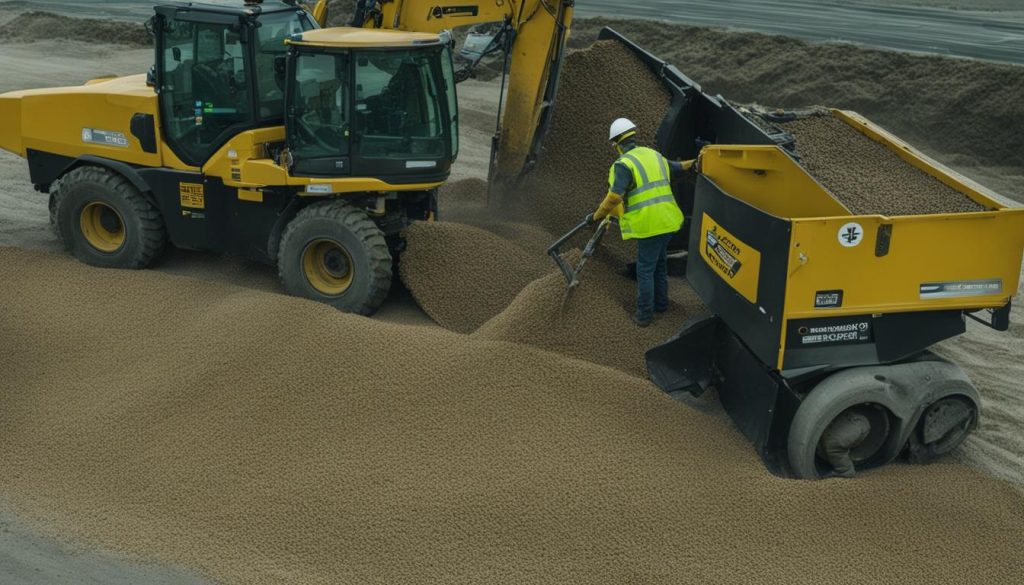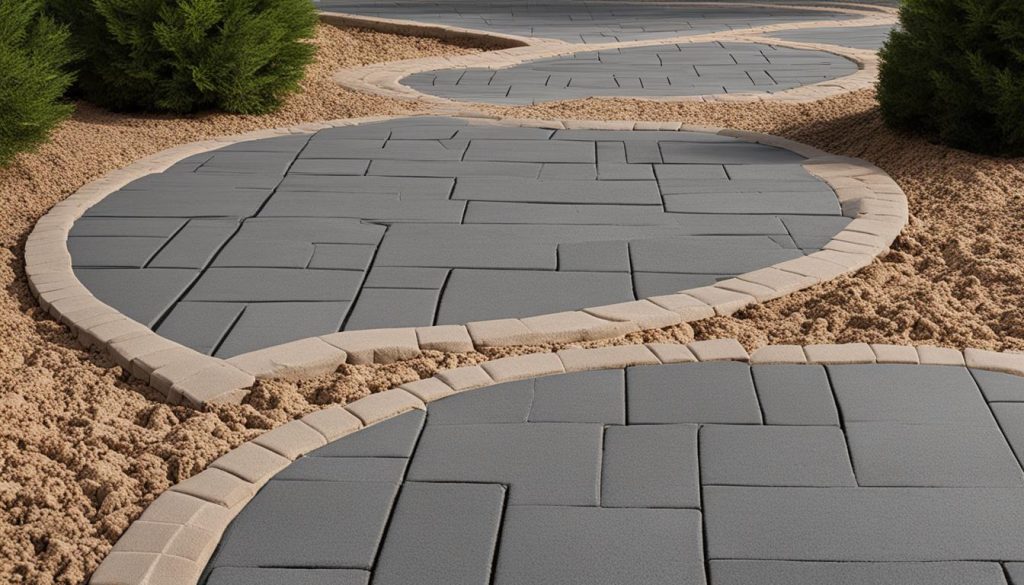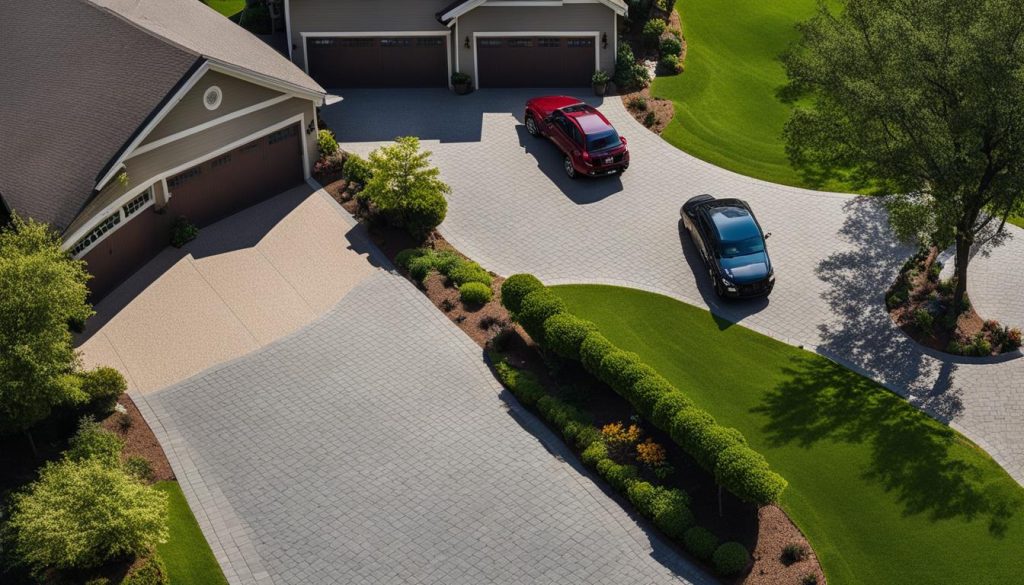Hello and welcome to our guide on avoiding interlocking installation mistakes for lasting finishes on your paving projects in Canada.
At Interlocking Contractor, we specialize in interlocking installations, and in our experience, we have seen many mistakes that could have been easily avoided. We are here to guide you on how to steer clear of these mistakes and create a beautiful and long-lasting interlocking paved surface.
Interlocking installation mistakes can range from improper base preparation to incorrect interlocking pattern selection, leading to issues such as sinking, shifting, and weed infestation. These mistakes can be costly in terms of time, money, and effort, hence the importance of avoiding them.
Through this article, we will share expert advice on how to avoid the most common interlocking installation mistakes and ensure a perfect finish for your paving projects in Canada. Join us on this journey to learn how to avoid interlocking installation mistakes and achieve lasting results.
Improper Base Preparation
When it comes to interlocking installation, improper base preparation is one of the most common mistakes that can lead to various issues down the line. The base serves as the foundation for your interlocking pavers, and if it is not properly prepared, it can result in sinking, shifting, and uneven surfaces. To avoid these problems, it’s important to focus on creating a strong and stable base.
The interlocking base should be installed on a well-compacted and levelled surface. If the soil is unstable, it may be necessary to excavate the area and add a layer of compacted gravel or crushed stone. This will provide a solid foundation for your interlocking pavers and prevent any movement over time.
| Steps for Proper Base Preparation |
|---|
| 1. Clear the area of any debris and vegetation. |
| 2. Determine the required excavation depth based on the type of soil and the thickness of the interlocking pavers. |
| 3. Compact the soil to ensure a firm and level surface. |
| 4. Add a layer of crushed stone or gravel and compact it to a depth of at least 4 inches. |
| 5. Lay a geotextile fabric over the base to prevent weed growth and improve drainage. |
Proper base preparation is crucial for the success and longevity of your interlocking installation. By creating a sturdy base, you can ensure that your pavers remain in place and maintain their appearance for years to come.

Incorrect Interlocking Pattern
Choosing the right interlocking pattern is essential for achieving a functional and visually appealing paved surface. Unfortunately, incorrect interlocking patterns are one of the most common mistakes made during installation. A poorly designed interlocking layout can result in an uneven surface, poor drainage, and even structural issues over time.
When selecting an interlocking design, consider the overall style of your home or building, as well as the intended use of the paved surface. For example, a herringbone pattern is a popular choice for driveways as it provides added traction and stability for vehicles. Meanwhile, a circular or fan-shaped pattern is ideal for creating a focal point in a patio or garden.
Another common mistake is failing to properly lay out the interlocking design. Take the time to plan and measure the area before starting the installation process. Consider factors such as the shape and size of the area, any potential obstacles, and any patterns or motifs you want to incorporate.
Pattern Mistakes to Avoid:
- Using too many or too few interlocking paver sizes
- Not using a consistent joint width
- Ignoring the direction of sunlight and shading when placing pavers
- Failing to properly align the pavers
By avoiding these common pattern mistakes, you can create a visually stunning and durable paved surface that enhances the beauty and functionality of your outdoor space.
Improper Joint Sand Application
Inadequate joint sand application is a major mistake that can compromise the stability and durability of your interlocking pavers. Joint sand installation is critical as it helps lock the pavers together, keep them in place and prevent weed growth. Improper joint sand application can cause the pavers to shift, loosen or even become uneven. Here are some tips to help you apply joint sand properly:
- Choose the right type of sand: Not all sand is the same, and it is crucial to use the right type of joint sand for your interlocking pavers. Make sure the sand is labeled for interlocking use and is free of silt and debris.
- Fill the joints completely: Before applying joint sand, make sure the pavers are clean and dry. You can use a leaf blower or a broom to remove debris and sand from the surface. Carefully pour sand onto the pavers and use a stiff bristle brush to work the sand into the joints. Repeat the process until the joints are completely filled.
- Saturate the joints: Once you have filled the joints, use a garden hose with a gentle spray to wet the sand. Continue adding sand and saturating the joints until they are completely filled. Saturating the joints will help the sand settle and create a more stable surface.
- Remove excess sand: After saturating the joints, use a leaf blower to remove any excess sand from the surface. This step is crucial as it will prevent the sand from hardening onto the pavers and ruining the finish.
Joints that are properly filled and saturated will ensure long-term stability and durability for your interlocking pavers. Don’t make the mistake of neglecting joint sand installation, as it can have dire consequences for your interlocking project’s longevity.

Lack of Proper Edging
When it comes to interlocking installation, proper edging is crucial for maintaining the integrity and longevity of your paved surface. Without adequate edge restraints, the pavers may spread and shift over time, compromising both the appearance and stability of your interlocking pavers.
At our company, we understand the importance of proper edging and strive to provide top-quality edge restraint systems for our clients. Our interlocking edging is designed to provide the necessary support and stability to ensure that your pavers remain in place, even with heavy foot traffic or exposure to weather elements.
Types of Edge Restraint Systems
There are various types of edge restraint systems available for interlocking installations, including plastic, aluminum, and concrete. Each type has its own benefits and drawbacks, and the choice depends on the specific needs and preferences of the client.
For example, plastic edging is low-cost and easy to install, but it may not be as durable as other options. Aluminum edging provides exceptional strength and longevity but is more expensive than plastic. Concrete edging is the most robust of the three options, but it requires specialized installation and can be relatively more expensive.
Common Edging Mistakes
One of the most common edging mistakes is installing the wrong type of edge restraint for the specific needs of your interlocking pavers. For example, choosing a plastic edging system for a high-traffic area with heavy loads is likely to fail and cause damage over time.
Another common mistake is installing the edge restraint at the wrong depth. Properly installing edge restraints at the right depth helps prevent heaving and shifting, ensuring that your pavers remain intact for longer. It’s also essential to ensure that the edge restraints are installed at an appropriate distance from the edge of the pavers to prevent them from protruding above the surface and tripping anyone.
Our Top-Tips for Proper Edging Installation
At our company, we have years of experience in interlocking installation and ensuring proper edging for our clients. Here are our top tips for successful edge restraint installation:
- Choose the right type of edge restraint system for your specific needs.
- Ensure that the edge restraints are installed at the correct depth and distance from the pavers.
- Adequately compact the base material before installing the edge restraints.
- Use a vibratory compactor to ensure the edge restraint materials are tightly packed and stable.
By following these tips and investing in high-quality edge restraint systems, you can ensure that your interlocking pavers remain stable and beautiful for years to come.
FAQ
What are some common interlocking installation mistakes to avoid?
Some common interlocking installation mistakes to avoid include improper base preparation, incorrect interlocking pattern selection, improper joint sand application, and a lack of proper edging. By understanding these mistakes and taking the necessary precautions, you can ensure a perfect and lasting finish for your paving projects in Canada.
What is improper base preparation in interlocking installation?
Improper base preparation refers to the inadequate or incorrect preparation of the base on which the interlocking pavers will be installed. This can lead to issues such as sinking, shifting, and uneven surfaces. It is crucial to properly compact the base to create a solid foundation for the interlocking pavers.
How can I avoid incorrect interlocking pattern mistakes?
To avoid incorrect interlocking pattern mistakes, it is important to carefully select and lay out the interlocking design. Consider both aesthetics and functionality when choosing the pattern. Take the time to plan and visualize the layout before installation to ensure a visually pleasing and functional paved surface.
Why is proper joint sand application important in interlocking installation?
Proper joint sand application is important in interlocking installation as it helps stabilize the pavers and prevent weed growth. Improper application can lead to shifting, loosening, and weed infestation. Follow expert advice on how to properly apply joint sand to ensure long-term stability and durability for your interlocking pavers.
What is the significance of proper edging in interlocking installation?
Proper edging is crucial for maintaining the integrity and longevity of your interlocking installation. Without adequate edge restraints, the pavers may spread and shift over time, compromising the overall appearance and stability of your paved surface. Choose and install the right edge restraints to ensure a secure and long-lasting interlocking paver installation.

